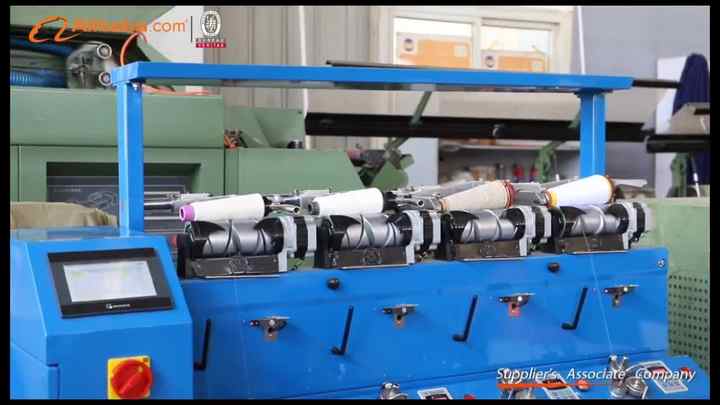Industry Standards Met by Optical Fibre Diameter Analyser Systems
Industry Standards Met by Optical Fibre Diameter Analyser Systems
Blog Article
Maximize Your Fibre Optic Performance: Comprehending Optical Fiber Diameter Analyser Modern Technology
The efficiency of fiber optic systems is seriously affected by the precision of their size, a factor often neglected in the pursuit of optimum signal honesty. Understanding the technology behind optical fibre diameter analysers exposes the detailed balance in between dimension precision and manufacturing top quality. These tools not only enhance compliance with industry criteria but additionally provide real-time insights that can preemptively address potential issues. Nonetheless, the ramifications of their use extend past mere dimension; they can basically modify the landscape of fiber optic efficiency. What aspects should one consider to harness their complete potential?
Significance of Optical Fiber Size
The diameter of optical fiber plays a crucial role in determining the efficiency and efficiency of interaction systems. It influences numerous essential specifications, including the mode of light breeding, attenuation, and bandwidth ability. Larger diameters commonly enable several light modes, assisting in higher data transmission rates. On the other hand, smaller sized diameters have a tendency to support fewer settings, which can enhance signal quality and reduce crosstalk.

Moreover, comprehending the diameter's ramifications can bring about cost savings by minimizing the need for signal boosting and repeaters in extensive networks (optical fibre diameter analyser). Finally, the significance of optical fiber diameter can not be overstated, as it directly impacts the overall efficiency and dependability of modern communication systems

How Size Impacts Signal Quality
Signal high quality in optical fiber systems hinges substantially on the diameter of the fiber. The size influences several crucial specifications, consisting of depletion, data transfer, and modal dispersion. A smaller sized diameter can cause higher attenuation prices, resulting in signal loss as light journeys through the fiber. This attenuation can jeopardize the integrity of the transmitted information, causing a decline in signal high quality, particularly over cross countries.
Alternatively, larger sizes generally enable enhanced light capture and minimized modal dispersion, improving signal clarity. In multimode fibres, a bigger core diameter can sustain multiple light settings, yet it may likewise present intermodal diffusion, which can degrade signal top quality. Therefore, choosing the optimal fiber size is critical for achieving the preferred performance in particular applications.
Furthermore, the communication in between the fiber size and the wavelength of the light utilized plays a vital role in determining the effective transmission range and general signal integrity. Comprehending exactly how fibre size affects signal quality is crucial for network developers and engineers striving to maximize optical fiber systems for trustworthy, high-speed information transmission.
Introduction of Diameter Analyser Innovation
In lots of optical fiber manufacturing processes, accurate dimension of fibre diameter is necessary for making certain consistent efficiency and high quality (optical fibre diameter analyser). Size analysers are sophisticated tools created to evaluate the physical measurements of optical fibers with high precision. They utilize sophisticated optical and laser technologies to gauge the diameter, ovality, and concentricity of the fibre, thus supplying important information for high quality control
These analysers can run in-line throughout the More Bonuses manufacturing procedure or as part of off-line screening procedures. In-line systems enable real-time surveillance, permitting manufacturers to readjust specifications instantly, thereby preserving optimum production problems. Off-line analysers, on the various other hand, give comprehensive assessments of sets, guaranteeing that any kind of inconsistencies from defined resistances are recognized and resolved.
Diameter analysers significantly contribute to the decrease of defects in optical fibres, enhancing total item dependability. By consistently determining key parameters, these innovations facilitate conformity with market requirements and requirements. As the demand for high-performance optical fibres continues to increase, the function of size analysers comes to be progressively important in attaining the desired high quality and efficiency requirements in fiber optic systems.
Trick Functions of Fiber Size Analysers
Although numerous models of fiber size analysers exist, they typically share several key functions that enhance their capability and integrity. Among the most substantial features is more high-resolution measurement abilities, which guarantee precise size analyses, essential for preserving quality assurance in fiber production. Furthermore, lots of analysers incorporate innovative optical sensors designed to spot minute variations in fibre diameter, hence providing important data for process optimization.
Another essential function is real-time surveillance, permitting operators to receive prompt comments on fibre size throughout the manufacturing process (optical fibre diameter analyser). This ability assists in quick modifications and reduces the chance of issues. Numerous analysers also come furnished with easy to use interfaces, allowing drivers to easily navigate through setups and information outcomes
Additionally, durable information storage space and analysis functionalities are essential for tracking historical efficiency fads and ensuring compliance with market criteria. Some versions even provide connectivity alternatives for combination right into existing manufacturing control systems, boosting overall functional performance. Finally, portable and recommended you read small designs allow for versatile deployment within production settings, guaranteeing that quality control processes are seamless and reliable. These attributes jointly add to the effectiveness of fibre diameter analysers in optimizing fiber optic efficiency.
Best Practices for Fiber Optimization

First, normal calibration of optical fibre size analysers is important. This makes sure precise measurements and reduces potential inconsistencies that could affect performance. Next off, preserving a clean functioning setting is important; dirt and pollutants can bring about signal deterioration.
Furthermore, it is vital to select fibres that meet particular application requirements. This involves assessing aspects such as attenuation, data transfer, and environmental conditions. Proper installation methods should also be stuck to, consisting of avoiding sharp bends and extreme tension, which can jeopardize fiber honesty.
In addition, utilizing sophisticated tracking systems can facilitate real-time performance assessments, making it possible for prompt identification of concerns. Normal testing and maintenance ought to be performed to ensure that fibers stay within ideal operational parameters.
Finally, training personnel on the current fibre optimization technologies and methods will certainly improve their capability to apply reliable methods. By complying with these finest practices, companies can dramatically enhance the performance and life-span of their optical fiber systems, guaranteeing efficient interaction and information transfer.
Conclusion
Finally, the integration of optical fibre size analyser modern technology is critical for making the most of fibre optic efficiency. By making certain specific dimensions of fiber measurements, these analysers substantially enhance signal top quality and minimize losses throughout data transmission. Routine calibration and maintenance of the analysers are imperative to promote optimal efficiency and conformity with market requirements. Eventually, the application of this modern technology assists in enhanced data transmission rates and strengthens signal integrity, adding to the overall efficiency of fiber optic systems.
Signal quality in optical fibre systems pivots substantially on the size of the fibre.In lots of optical fibre manufacturing procedures, exact measurement of fibre diameter is important for ensuring consistent performance and quality. As the demand for high-performance optical fibers proceeds to increase, the function of diameter analysers becomes significantly vital in achieving the preferred quality and efficiency criteria in fiber optic systems.
These features jointly contribute to the efficiency of fibre diameter analysers in enhancing fiber optic performance.
In conclusion, the combination of optical fiber diameter analyser technology is essential for making the most of fibre optic performance.
Report this page